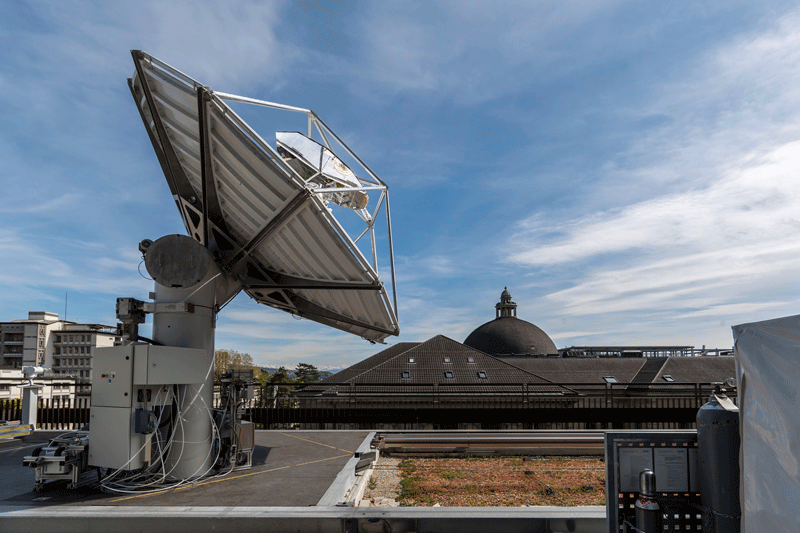Solar plant shines light on aviation fuels
Carbon-neutral liquid fuels produced from sunlight and ambient air are under development and could deliver sustainable aviation and shipping, claim scientists.

A team of researchers at ETH Zürich in Switzerland has developed a mini solar refinery on the roof of its Machine Laboratory building to produce synthetic liquid fuels such as ‘solar kerosene’. According to the team, the fuels release as much CO2 during their combustion as was previously extracted from the air for their production.
‘Unlike with biofuels, whose potential is limited due to the scarcity of agricultural land, this technology enables us to meet global demand for jet fuel by using less than 1% of the world’s arid land and would not compete with the production of food or livestock feed,’ explains Johan Lilliestam, a Research Group Leader at the Institute of Advanced Sustainability Studies (IASS Potsdam) in Germany, a project partner.
The team has demonstrated the technical feasibility of the entire thermochemical process for converting sunlight and ambient air into drop-in fuels through the integration of three units.
First, using a direct air capture (DAC) unit based on adsorption-desorption, they can co-extract CO2 and water (H2O) directly from ambient air. Second, using a thermochemical redox cycle driven by concentrated solar energy, they can convert CO2 and H2O into CO and H2 ‒ syngas ‒ in the solar reactor unit. Finally, using methanol synthesis or the Fischer-Tropsch process, they can covert the syngas into liquid hydrocarbons in a gas-to-liquid (GTL) synthesis unit.
‘The coupling of the intermittent solar redox cyclic process with the round-the-clock DAC and GTL processes complicates the integration of the three units because of the temporal mismatch of both mass and energy flow rates to and from each unit,’ explains Aldo Steinfeld, Professor of Renewable Energy Carriers at ETH Zürich.
‘The most critical aspect of the integration is the suitability of the gas streams exchanged between the units, namely the quality and purity of the CO2 and H2O exiting the DAC unit and fed to the solar redox unit, and the quality and purity of the syngas exiting the solar redox unit and fed to the GTL unit.’
Steinfeld shares that the researchers have spent more than a decade perfecting the technology.
‘Over 20 doctoral theses have been completed – from materials and structures development to thermodynamic and kinetic analyses of the chemical reactions involved, high-flux optics of the solar concentrating system, computational fluid dynamics and heat transfer modelling,’ he explains.
‘Last, but not least, there’s the engineering design, fabrication and testing of the solar reactor, which is a key component of the entire process chain.’
The highest energy efficiency value measured for the solar reactor so far is 5.6%, notes Steinfeld, so further work is needed to optimise heat recovery between the thermochemical cycle’s redox steps to boost efficiency to more than 20%.
‘Furthermore, there is room for optimisation of the redox material structure [made from cerium oxide], for example, by means of 3D-printed hierarchically ordered structures for improved heat and mass transfer. We are investing major efforts in both directions.’
Supported by researchers at IASS Potsdam, the project has identified ideal production sites in desert regions such as southern Spain and North Africa, the Arabian Peninsula, northern Chile, Australia, and the Southwest of the United States, where the normal direct annual solar radiation is higher than 2,000kWh/m2 per year.
Chemically, solar drop-in fuel is identical to fossil fuel, which aids the demand side of the supply chain, suggests Lilliestam. However, large new infrastructure – production units, grids and transport systems – are required to supply the fuel to centres of demand.
Given the high initial investment costs, solar fuels will need political support to secure their market entry, urges Lilliestam. ‘The EU's existing support instruments – emissions trading and offsetting – are not sufficient to stimulate market demand for solar fuels. In view of this, we propose the adoption of a European technology-specific quota system for aviation fuel. This would require airlines to acquire a specific share of their fuel from solar sources.’

